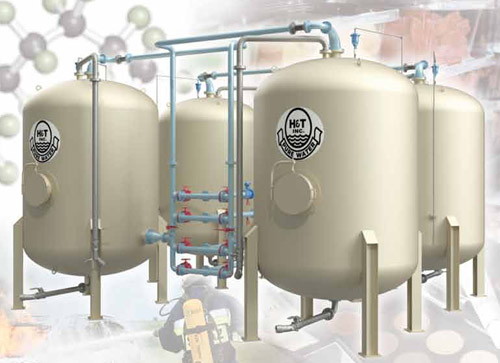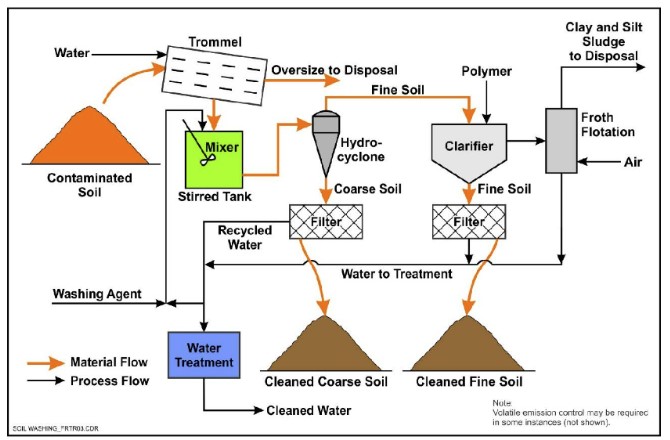The Future in PFAS Waste Management Methods for Sustainability
Wiki Article
How PFAS Therapy Makes Certain Clean and Lasting Water
The presence of PFAS, frequently known as "forever chemicals," poses substantial obstacles to water high quality and public health. Advanced therapy modern technologies, including triggered carbon adsorption and membrane layer purification, have become reliable solutions to minimize these impurities. By using these approaches, areas can not just attain cleaner water however additionally foster lasting practices that safeguard environments. The implications of these treatments prolong beyond instant wellness benefits; they increase critical concerns regarding long-lasting water monitoring techniques that must be dealt with to guarantee a resilient future. What does this mean for our approach to water sustainability?
Understanding PFAS Contamination
PFAS, or per- and polyfluoroalkyl substances, have actually become a substantial environmental problem as a result of their extensive prevalence and persistence in the environment. These artificial chemicals have actually been made use of in different commercial applications and consumer products, consisting of non-stick cooking equipment, water-proof garments, and food product packaging, due to their one-of-a-kind residential properties such as water and oil resistance.The contamination of dirt and water resources by PFAS occurs primarily through commercial discharges, firefighting foam usage, and leaching from land fills. pfas management. Once launched, these materials are immune to deterioration, bring about their buildup in the environment. This determination elevates essential problems, as PFAS can travel cross countries with groundwater and surface area water supply, influencing alcohol consumption water products and communities

Health Threats of PFAS
The perseverance of PFAS in the atmosphere elevates significant wellness issues for individuals exposed to these substances. Study has connected PFAS direct exposure to different negative health and wellness effects, including immune system disorder, liver damage, and raised danger of certain cancers cells.The universality of PFAS in customer items, such as non-stick kitchenware, water-repellent materials, and food product packaging, more enhances the risk of exposure. Drinking water contaminated with PFAS is a considerable worry, as these chemicals can seep into groundwater sources. Vulnerable populations, consisting of children and those living near commercial websites, may face elevated threats as a result of their establishing systems and potential for higher direct exposure levels.
As understanding of these wellness risks remains to expand, regulatory agencies are starting to develop guidelines for PFAS degrees in alcohol consumption water. Public health initiatives are important to alleviate direct exposure and protect areas from the lasting results of these dangerous substances.

Cutting-edge Therapy Technologies
Just how can we properly tackle the challenges positioned by PFAS contamination in water sources? Cutting-edge therapy modern technologies are arising as essential options in the mission for clean water. These approaches concentrate on the removal or destruction of per- and polyfluoroalkyl compounds (PFAS), which are well-known for their persistence in the setting.One promising approach is adsorption utilizing sophisticated materials, such as triggered carbon and ion exchange resins. These materials have actually shown effectiveness in recording PFAS particles from water. One more significant innovation is membrane filtering, which uses nanofiltration and reverse osmosis to different pollutants at the molecular degree, therefore offering a barrier versus PFAS.
Furthermore, advanced oxidation procedures (AOPs) employ strong oxidants a knockout post to damage down PFAS substances click to read more into harmless results. This technique is particularly reliable for treating very infected water sources. Bioremediation methods, using specific microorganisms, are also being checked out to degrade PFAS.
As research study proceeds, crossbreed systems that combine multiple technologies might provide enhanced performance, dealing with the complexities of PFAS contamination. The advancement and application of these cutting-edge treatment innovations are necessary actions toward making certain the safety and security and sustainability of our water sources.
Benefits of Reliable PFAS Treatment
Successfully dealing with PFAS contamination in water resources dramatically boosts public wellness and ecological security. PFAS, commonly described as "forever chemicals," are immune to degradation and can collect in the body, causing serious health dangers such as cancer, liver damage, and body immune system disorder. By applying effective treatment techniques, areas can decrease direct exposure to these harmful materials, inevitably improving the health results of their populaces.
Additionally, successful PFAS therapy adds to the preservation of regional ecosystems. Polluted water can negatively influence aquatic life and disrupt the fragile equilibrium of regional habitats. By making certain tidy water, therapy procedures safeguard biodiversity and preserve eco-friendly integrity.
Additionally, reliable PFAS remediation can cultivate public self-confidence in water top quality. When neighborhoods are assured that their alcohol consumption water is devoid of unsafe impurities, it promotes a feeling of safety and security and well-being. This trust is essential for area interaction and assistance for ongoing water monitoring efforts.
Future of Water Sustainability
In the middle of growing problems about water top quality and scarcity, the future of water sustainability rests on ingenious strategies and collective initiatives. As areas face the impending hazards of impurities like PFAS, the advancement of advanced therapy technologies is crucial. These technologies not just concentrate on the removal of damaging materials yet also promote the reuse and recycling of water, consequently reducing overall need.In addition, reliable water administration plays a critical role in guaranteeing lasting methods. Policymakers need to incorporate scientific research study with regulatory frameworks to develop clear standards for water use and treatment. Stakeholder interaction, including neighborhood areas and industries, cultivates a feeling of shared advice responsibility and motivates sustainable practices throughout different sectors.
Investment in infrastructure is also important; upgrading aging systems to incorporate contemporary filtering and purification techniques can considerably improve water high quality. Accepting green modern technologies, such as all-natural purification systems, can give eco-friendly options.
Ultimately, the future of water sustainability hinges on a holistic approach that integrates innovation, plan, and community participation. By focusing on these aspects, we can protect our water sources for generations to find, guaranteeing tidy and sustainable water for all.
Conclusion
Finally, the efficient treatment of PFAS is crucial for making certain tidy and sustainable water. By utilizing advanced innovations such as triggered carbon adsorption, membrane layer filtering, and advanced oxidation processes, communities can dramatically reduce the health and wellness risks associated with these impurities. The combination of these treatment techniques sustains environment security and improves biodiversity. Ultimately, durable PFAS therapy techniques add to long-term durability in water administration, promoting public rely on water top quality and promoting lasting methods.Report this wiki page